Erysimum is one of the most generous plants any gardener can grow. Also known as wallflowers, erysimum flower from early spring and can linger long after Midsummer's Day. Some forms are sweetly scented, too, their fragrance hovering somewhere between parma violet and mellow honey. Some of our loveliest wallflowers are chameleons, with flowers that seem to shimmer between violet, butterscotch and brick pink.
Jump to
- How to grow erysimum
- When to cut back erysimum
- How to propagate erysimum
- Are erysimum biennial or perennial?
- The best erysimum to grow
- Where to buy erisimum
How to grow and care for erysimum
Where to plant erysimum
Wallflowers prefer light, well drained soils and full sun. A warm, open position will bring out the scent of the blooms.
When to plant erysimum
Biennial wallflowers are often sold as bare root plants in garden centres in early autumn. They are often sold in bundles, and are very good value. Plant them at the same time as you plant spring bulbs – they are hardy, so will survive the winter. Soak in water before planting in borders or pots.
You may also like
- A spring border planting plan from Sarah Price
- Wood anemones for shady corners and spring displays
- Why we should all be planting wildflowers in the garden
- Ideas for a white garden
When to cut back erysimum
Left to their own devices, perennial erysimums have a tendency to become woody and leggy. They fizzle out within four to five years, usually succumbing over winter.
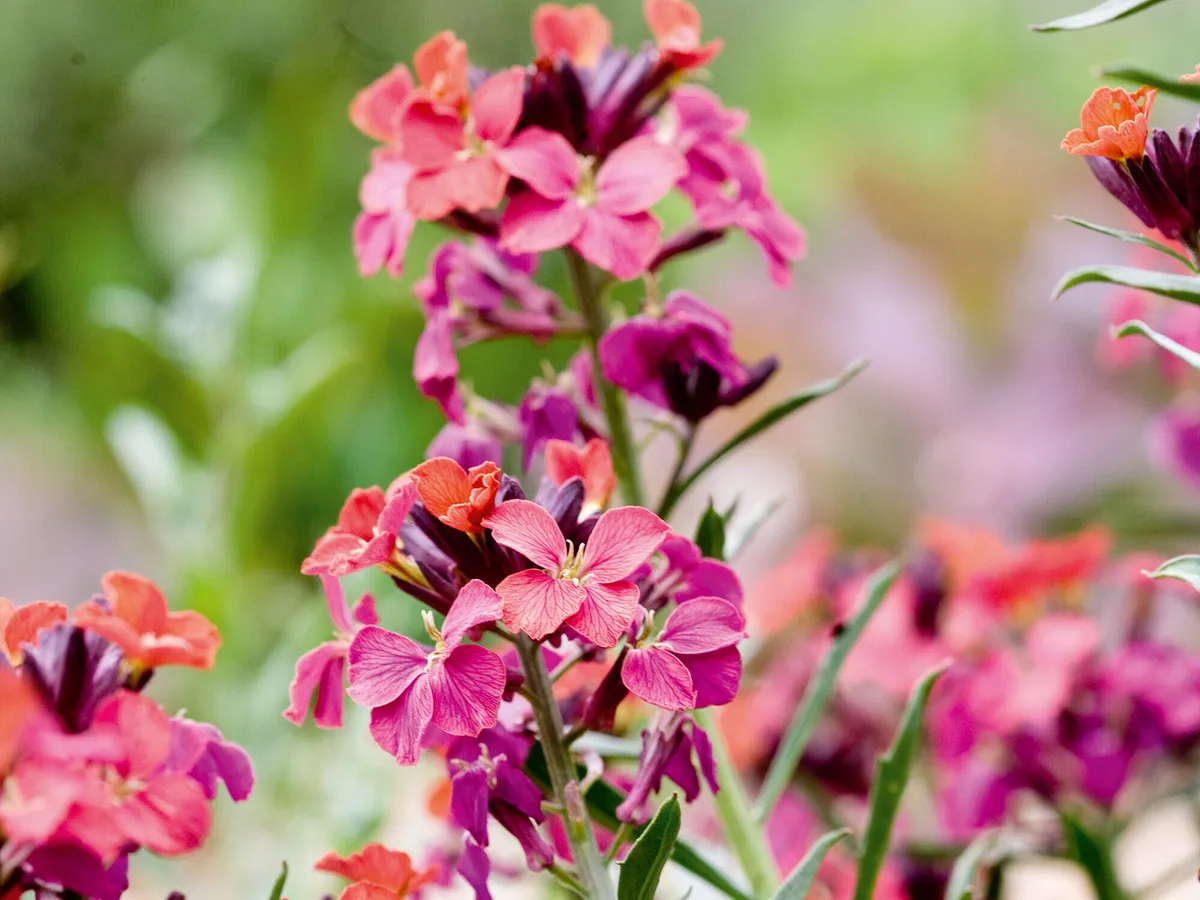
The way to extend the lifespan of wallflowers and keep them compact and vigorous is to give them a yearly midsummer trim by cutting into the foliage. However if the erysimum stems are very woody, cut back hard to the base, but try to take a few insurance cuttings straight afterwards. You will have to sacrifice some flowers, but many wallflowers will rebloom.
How to take cuttings and propagate erysimum
By early to mid-July your erysimum will have bushed out to provide plenty of cutting material. Look for 7-10cm shoots that have begun to firm up slightly. If your wallflower cuttings have flower buds, remove them. Trim under the node and plunge them into small seed trays filled with damp horticultural sand, or gritty compost.
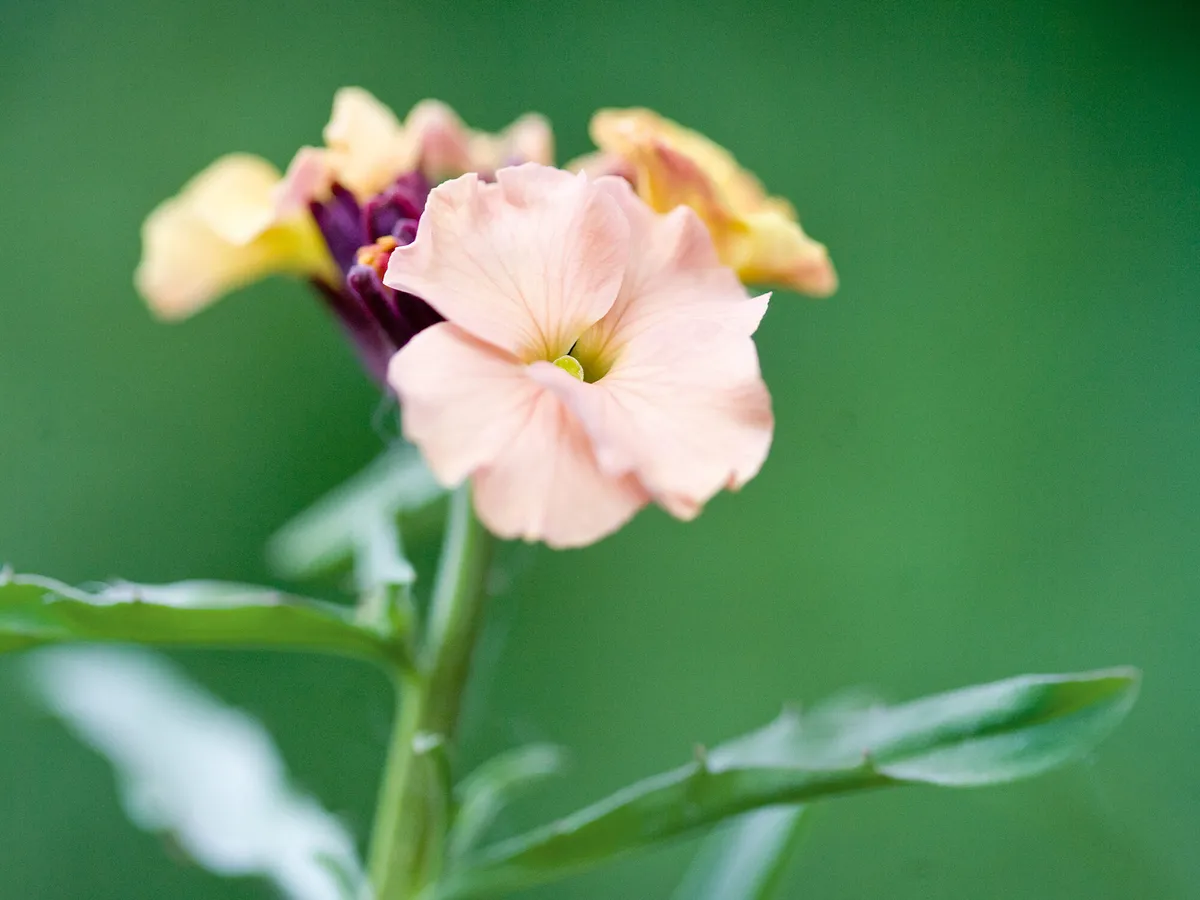
Pot up if rooted in early September. If not, leave them alone until next April. Give your new plants a warm, sunny position and well-drained conditions. Add grit to heavy soil.
Are erysimum biennial or perennial?
Erysimums can be perennial or biennial. Biennials flower in late spring, producing fragrant flowers that go well with late April and May tulips. The perennial forms start flowering earlier and continue for many months. They are usually evergreen and produce sterile flowers that can't set seed, so respond by pushing up a nonstop succession of flowering spikes, which are a good source of nectar for pollinators. The crown for the longest flowering wallflower of all must go to Erysimum 'Bowles's Mauve', which can flower for up to nine months of the year.
IN BRIEF
What Erysimum.
Common name Wallflower.
Season Biennials flower in late spring, producing fragrant flowers that go well with late April and May tulips. The perennial forms start flowering earlier and continue for many months.
Size Heights usually vary from 30cm-60cm, though Bowles's Mauve' can reach 1m high when happy.
Conditions Good drainage and poorer soils. Give them a warm, open position in full sun to draw out the fragrance of the biennial forms.
The best erysimum to grow
Erysimum ‘Ruston Royal’
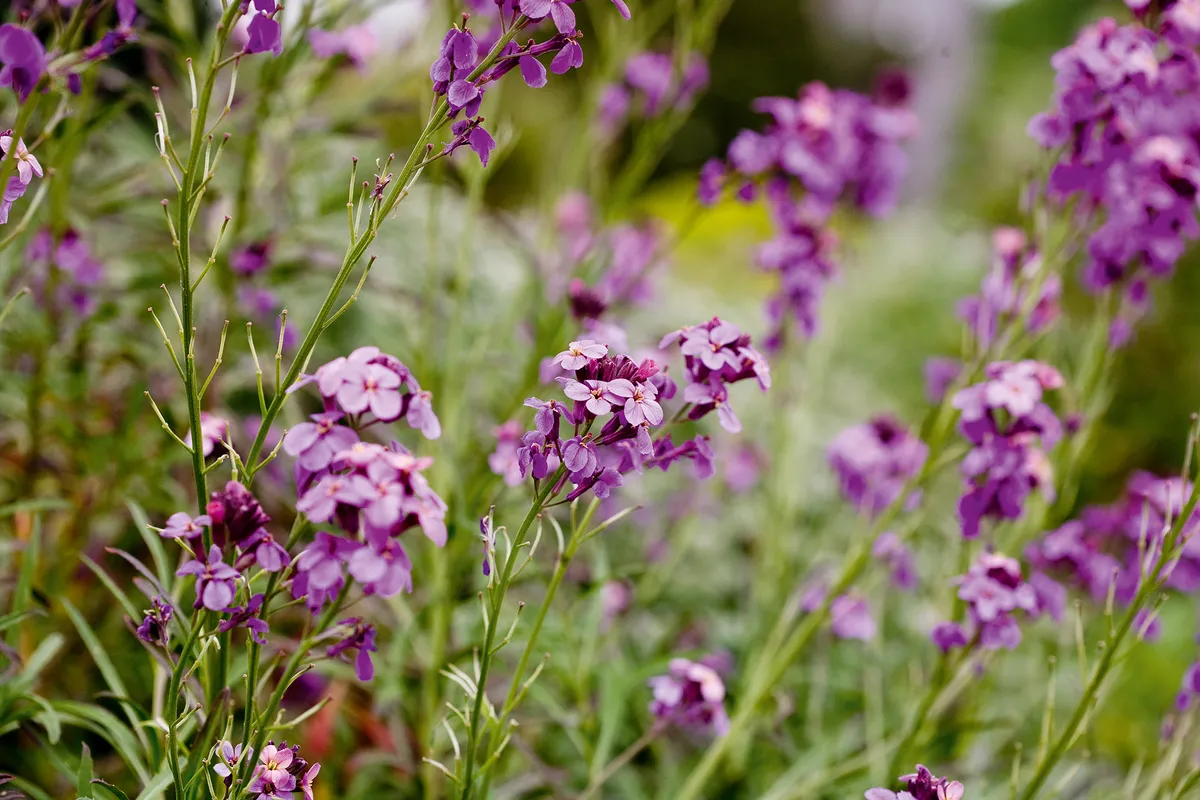
A robust wallflower cultivar with strong, woody stems and an upright habit. This wallflower flowers on long racemes, forming an evergreen bush. Spikes of light and dark mauve flowers that age to a paler lilac. Full sun and well-drained soil. Perennial.
Buy Erysimum 'Ruston Royal' through the RHS
Erysimum ‘Parrish’s’
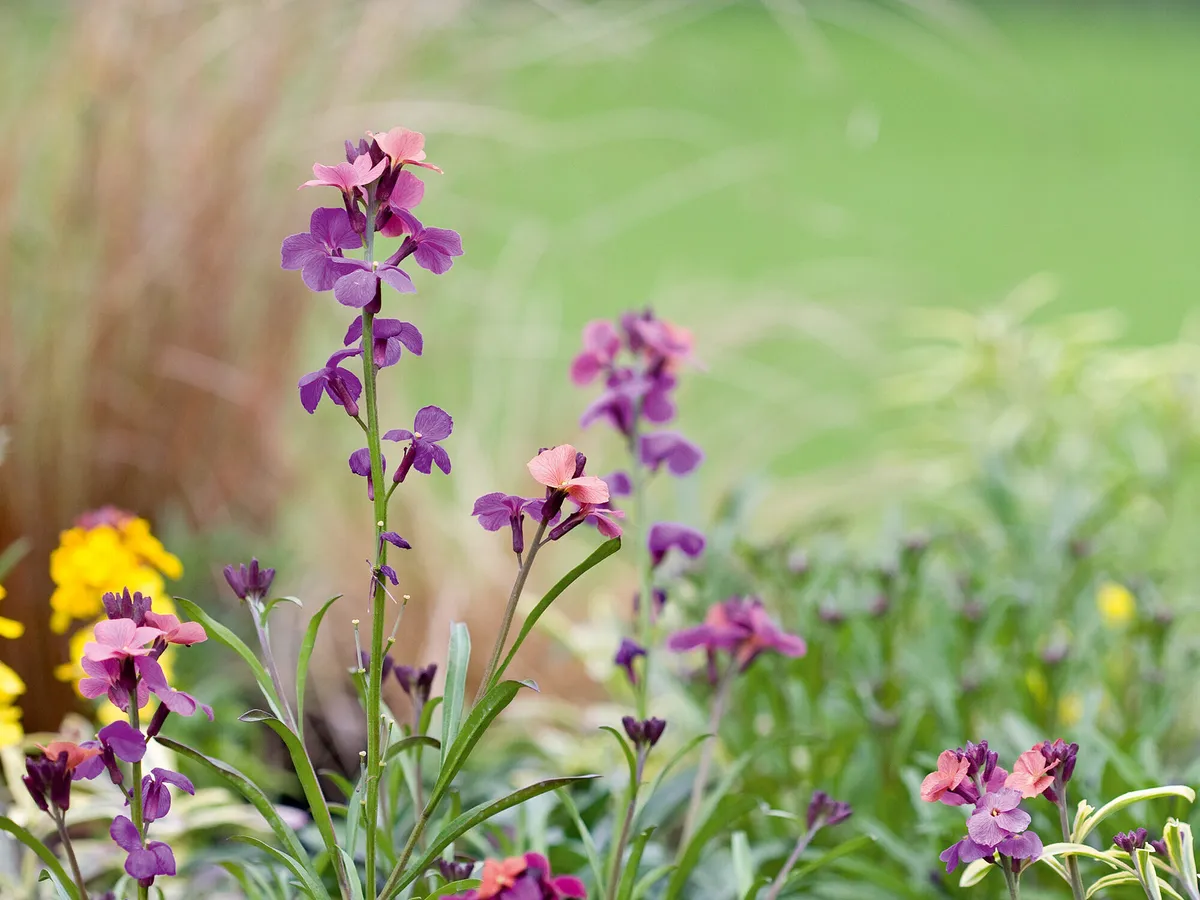
Multicoloured flowers that shimmer between brick-pink, butterscotch and violet. This wallflower was probably found in a garden owned by the Parrish family (close to Bath); it forms a large curtseying plant that billows over paths. Sweetly scented, with neat green foliage. Perennial.
Erysimum ‘Bowles’s Mauve’
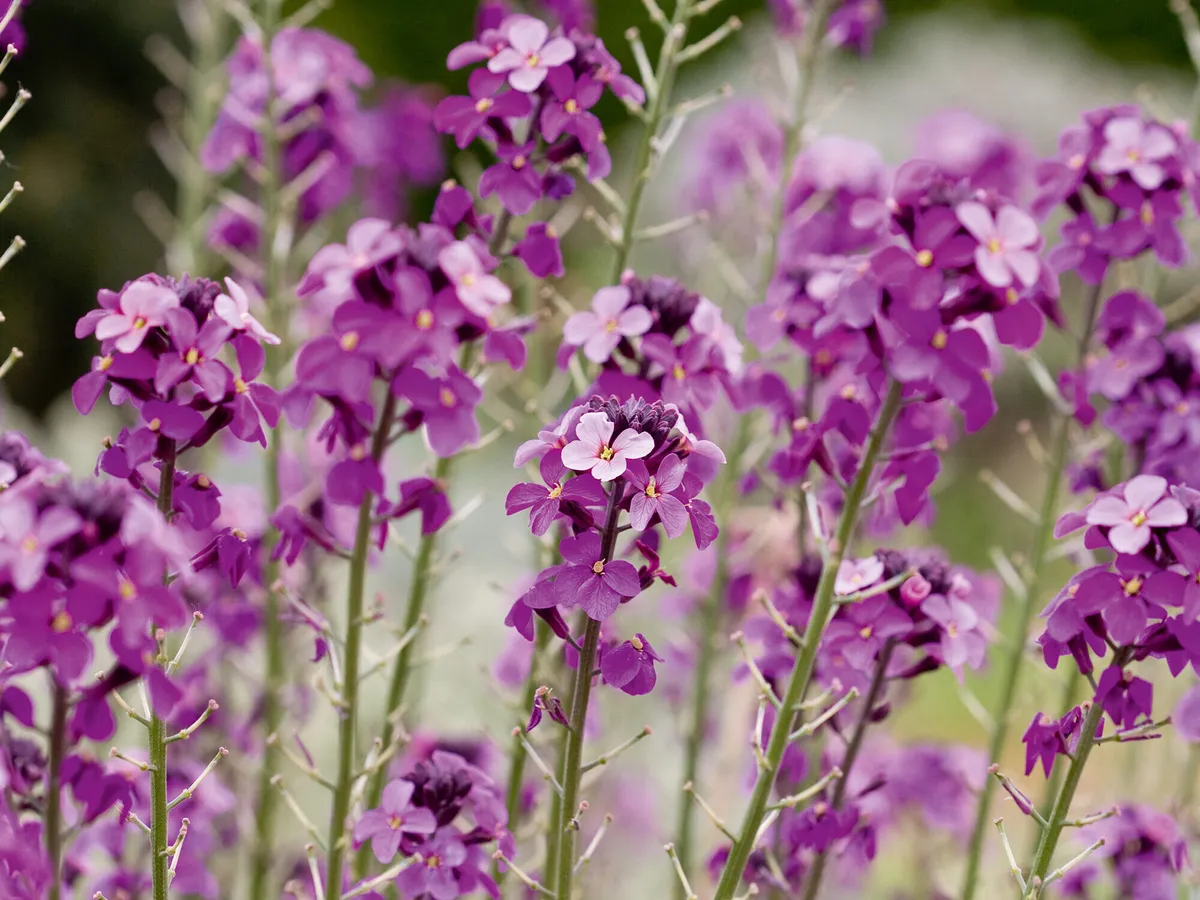
This classic long-flowering mauve erysimum forms a tall, upright plant that stays erect. Longer-lived than many. A wallflower that deserves a place in every garden, but sadly not scented. Can set a little seed on rare occasions. Perennial.
Erysimum ‘Jacob’s Jacket’

A spreading low wallflower with very narrow dark-green leaves. The flowers of this erysimum are a spangled mixture of pink, brick red and dark orange. It's sterile, so stays in flower for many weeks. Perennial.
Buy Erysimum 'Jacob's Jacket' from Beth Chatto's Plants & Gardens
Erysimum ‘Apricot Twist’
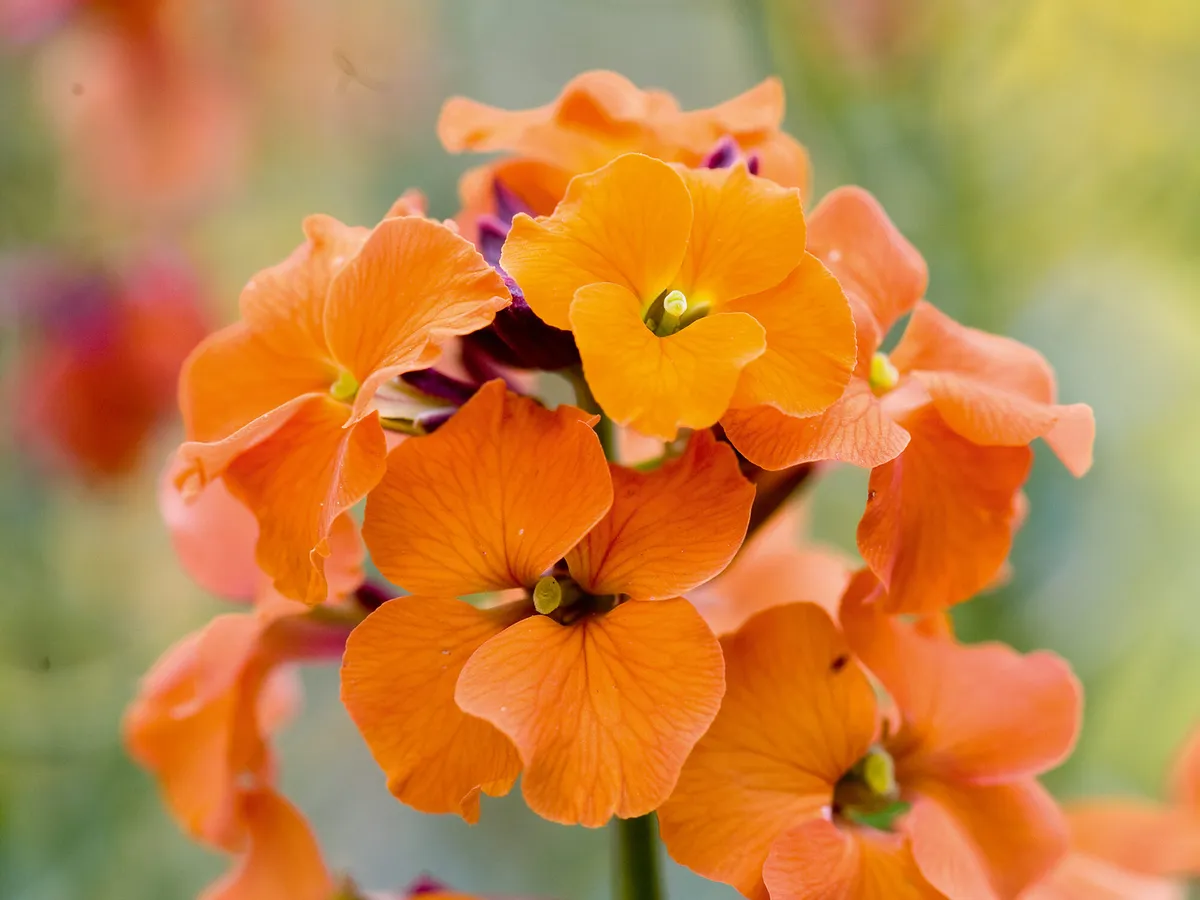
Another foot-high wallflower with vivid apricot flowers emerging from dark buds against dark-green foliage. It must be cut back regularly, otherwise it tails off. Very readily available here and in America. Lovely with dark tulips. Fragrant. Perennial.
Erysimum ‘Pastel Patchwork’

A new and unique wallflower cultivar with faded, pastel flowers in pink, gold and apricot. Looking mellow in sunlight, but the leggy, lax habit means this wallflower has to be cut back hard once flowering is waning. Collection holder Simon Weeks says it flowers well in autumn. Perennial.
Buy Erysimum 'Pastel Patchwork' from Hayloft
Erysimum ‘Constant Cheer’
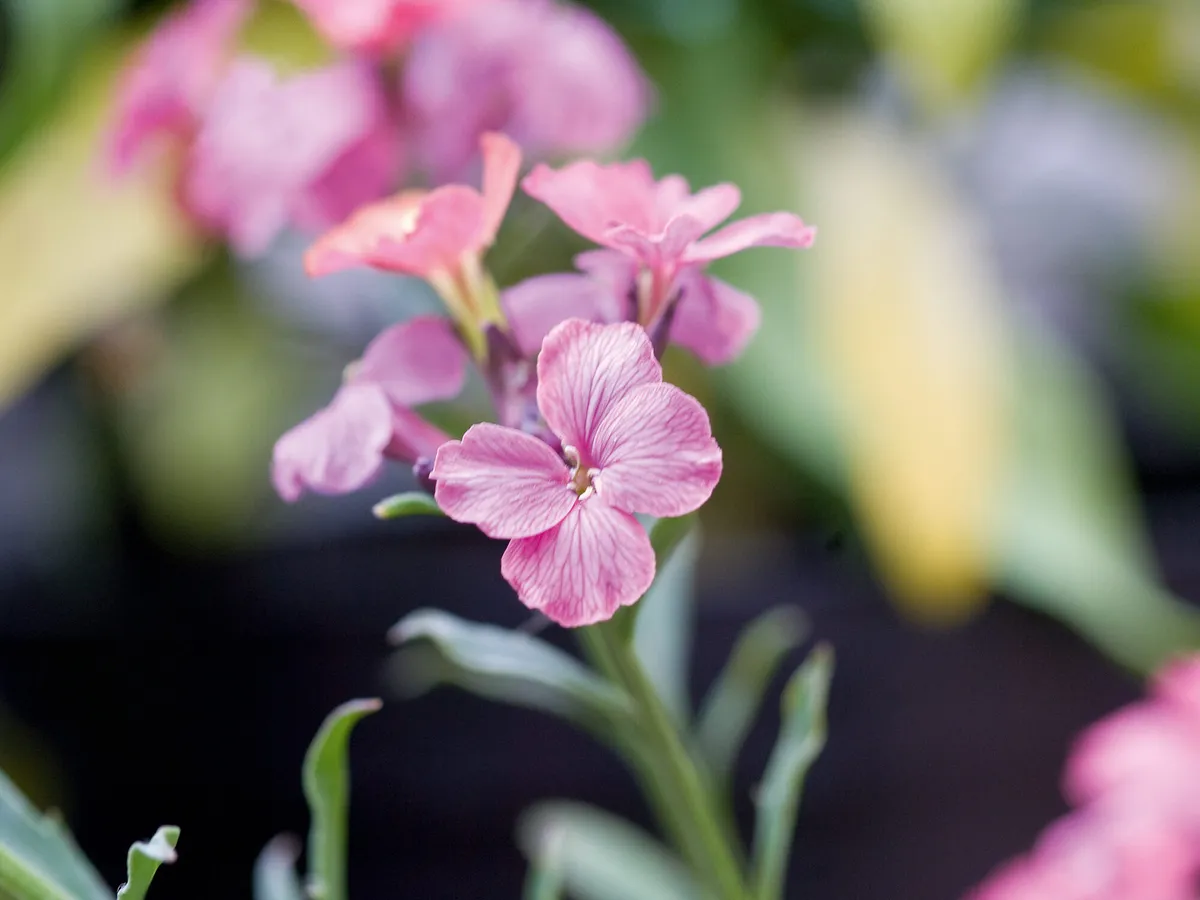
One of the oldest wallflower cultivars, producing flowers over many weeks on a compact plant. The brick-pink erysimum flowers age to mauve above dark-green narrow leaves which have a wavy edge. Sterile, so stays in flower for many weeks. Perennial.
Erysimum ‘Bredon’
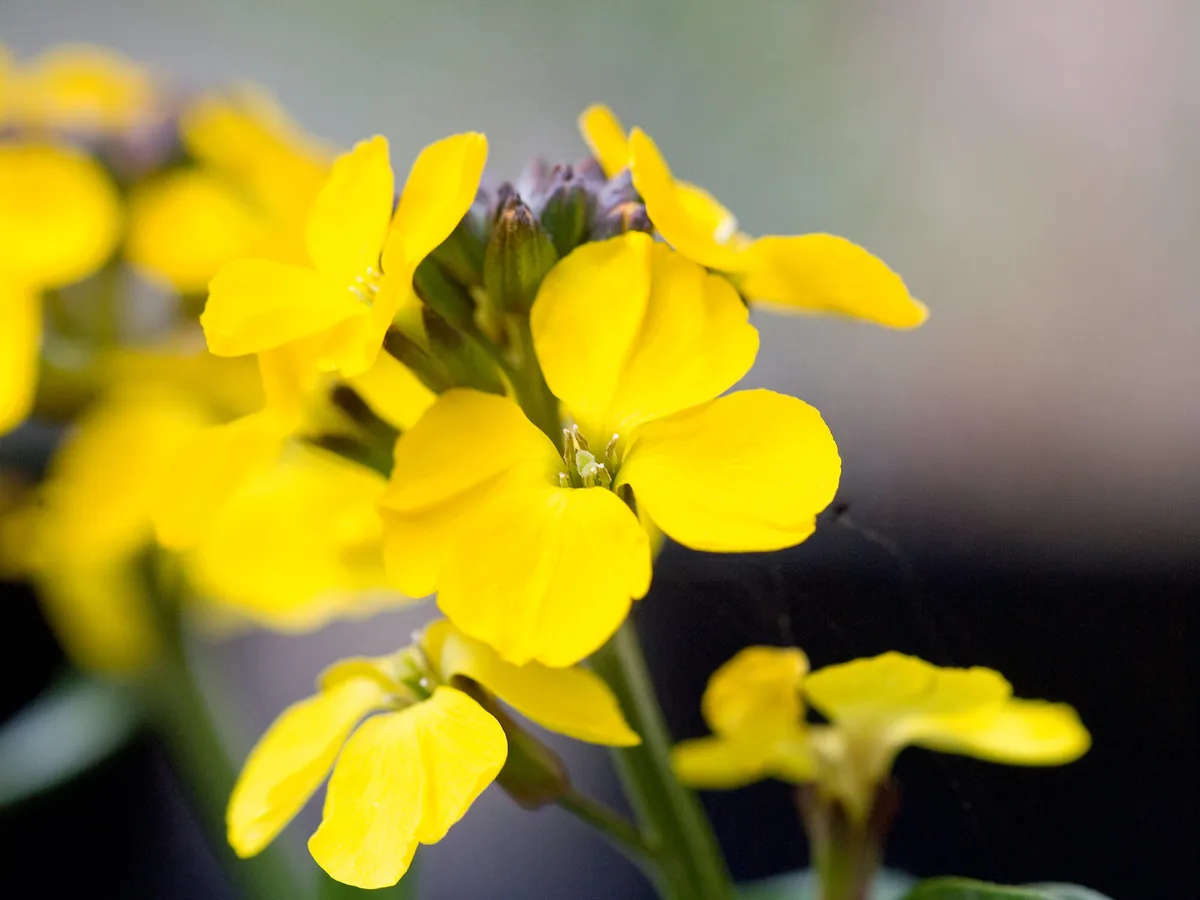
A single with large flowers set against the dark-green foliage. This compact wallflower is a parent for many, including Erysimum Walberton’s Fragrant Sunshine (=‘Walfrasun’). Perennial.
Find Erysimum 'Bredon' through the RHS
Erysimum Walberton’s Fragrant Star (=‘Walfrastar’)
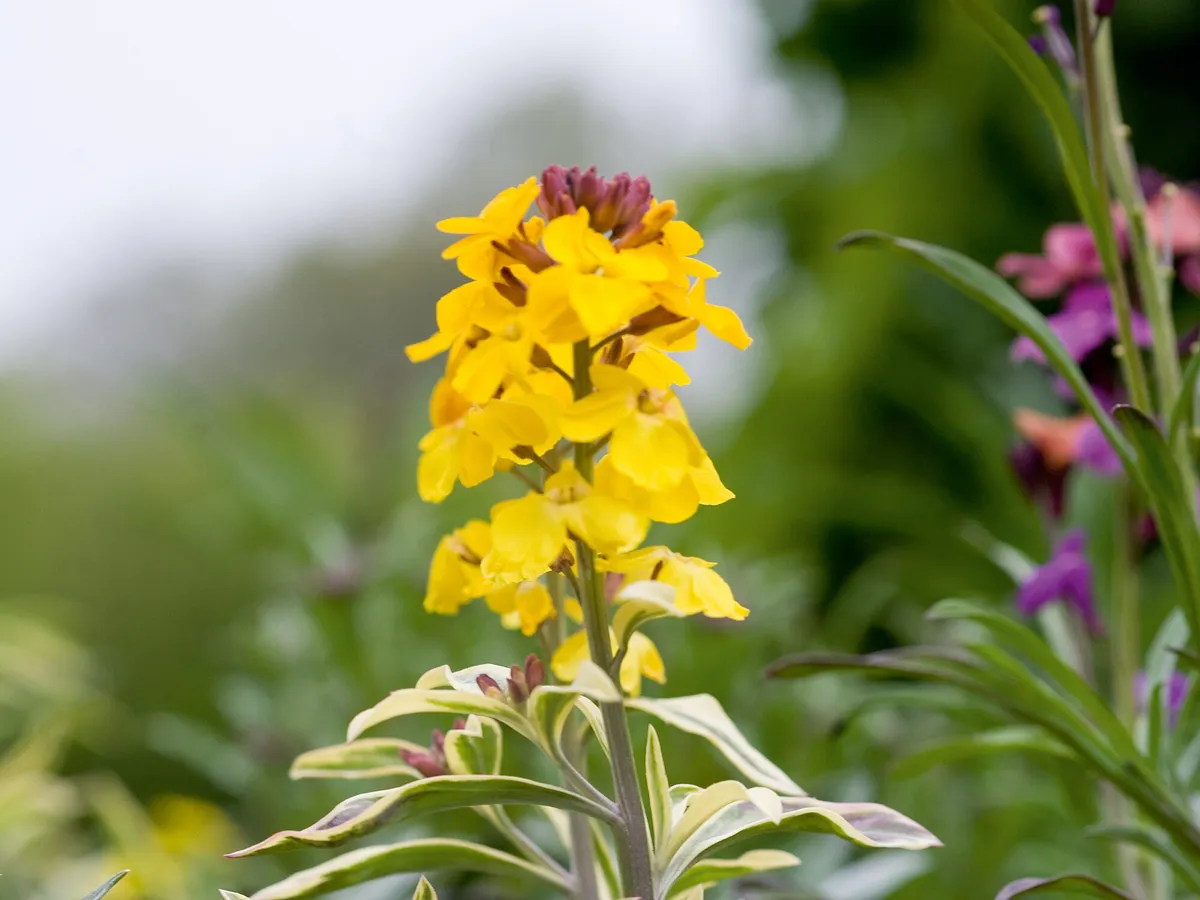
This compact wallflower has evergreen, variegated leaves with cream edges that don't revert. The bright-yellow flowers, held on a bushy plant, are very fragrant. This erysimum is sterile so stays in flower for many weeks. Perennial.
Find Erysimum 'Walberton's Fragrant Star' through the RHS
Erysimum cheiri
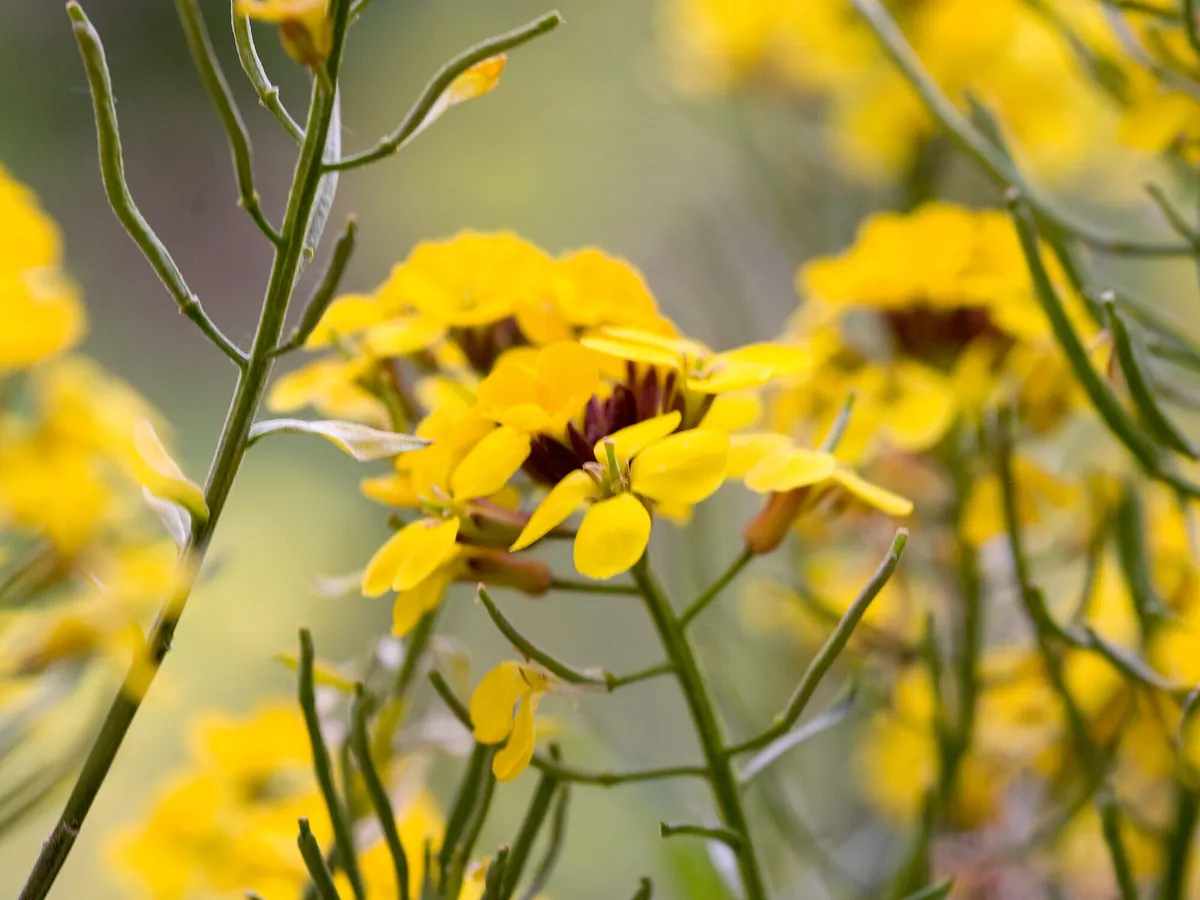
Like a brassica run to seed, this Aegean wallflower has provided the genetic injection of bright yellow in many named hybrids and cultivars. It will set seed and should be treated as a biennial. Erysimum ‘Harpur Crewe’ is the double form.
Where to buy erisimum
- Hoo House Nursery Gloucester Road, Tewkesbury, Gloucestershire GL20 7DA
- Oak Cottage (The Plant Heritage Collection) Dr Simon Weeks, Oak Cottage, Halesworth Road, Walpole, Suffolk IP19 9AZ
- Special Plants Greenways Lane, Cold Ashton, Chippenham, Wiltshire SN14 8LA
- Beth Chatto's Plants & Gardens, Elmstead Market, Colchester, Essex CO7 7DB
The history of erysimum
Wallflowers used to be divided into two genera – Erysimum and Cheiranthus. Generally Cheiranthus featured seed-raised biennials, often hybrids, and Erysimum contained shortlived perennials and alpines, but there were no conclusive botanical differences between the two. Sensibly the two genera are now under Erysimum.
Erysimums have been grown in Britain for centuries and may have come here with the Normans. The name Cheiranthus is thought to derive from the Greek for hand (cheir) and flower (anthos) and the heavily scented flowers were carried as nosegays to smother the stench of Elizabethan streets.
Their Latin name, Erysimum, is said to be derived from erno, meaning to draw up. Their alternative common name, blister cress, confirms their reputation for blistering the skin. I should add that the plant hasn’t irritated my skin, nor have I heard of anyone else being affected. However, wallflowers contain a cardiotonic glycoside known as cheiranthin or cheirotoxin, which is a toxic substance.
Here are more lovely spring flowers to plant